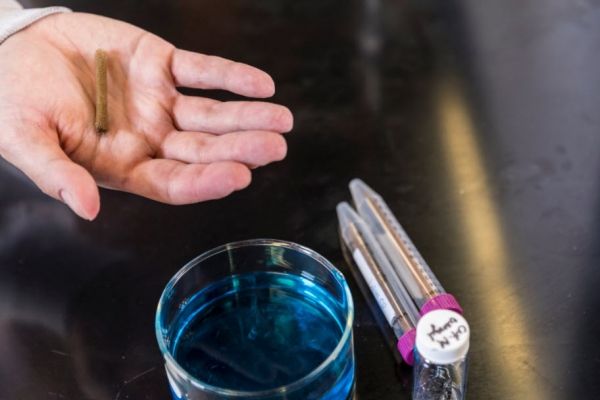Dyes are widely used in industries such as textiles, cosmetics, food processing, papermaking and plastics. Globally, we produce about 700,000 metric tons — the weight of two Empire State Buildings — of dye each year to color our clothing, eye shadow, toys and vending machine candy.
During manufacturing, about a tenth of all dye products are discharged into the waste stream. Most of these dyes escape conventional wastewater-treatment processes and remain in the environment, often reaching lakes, rivers and holding ponds, and contaminating the water for the aquatic plants and animals that live there. Even just a little added color can block sunlight and prevent plant photosynthesis, which disrupts the entire aquatic ecosystem.
A team led by the University of Washington has created an environmentally friendly way to remove color from dyes in water in a matter of seconds. The technique was described in a paper published online in June in the journal Applied Catalysis B: Environmental.
Read more at University of Washington
Image: The UW’s sponge-like material, left, is made from wood pulp and small bits of metal that can remove color from dyes in water within seconds. CREDIT: Mark Stone / University of Washington


